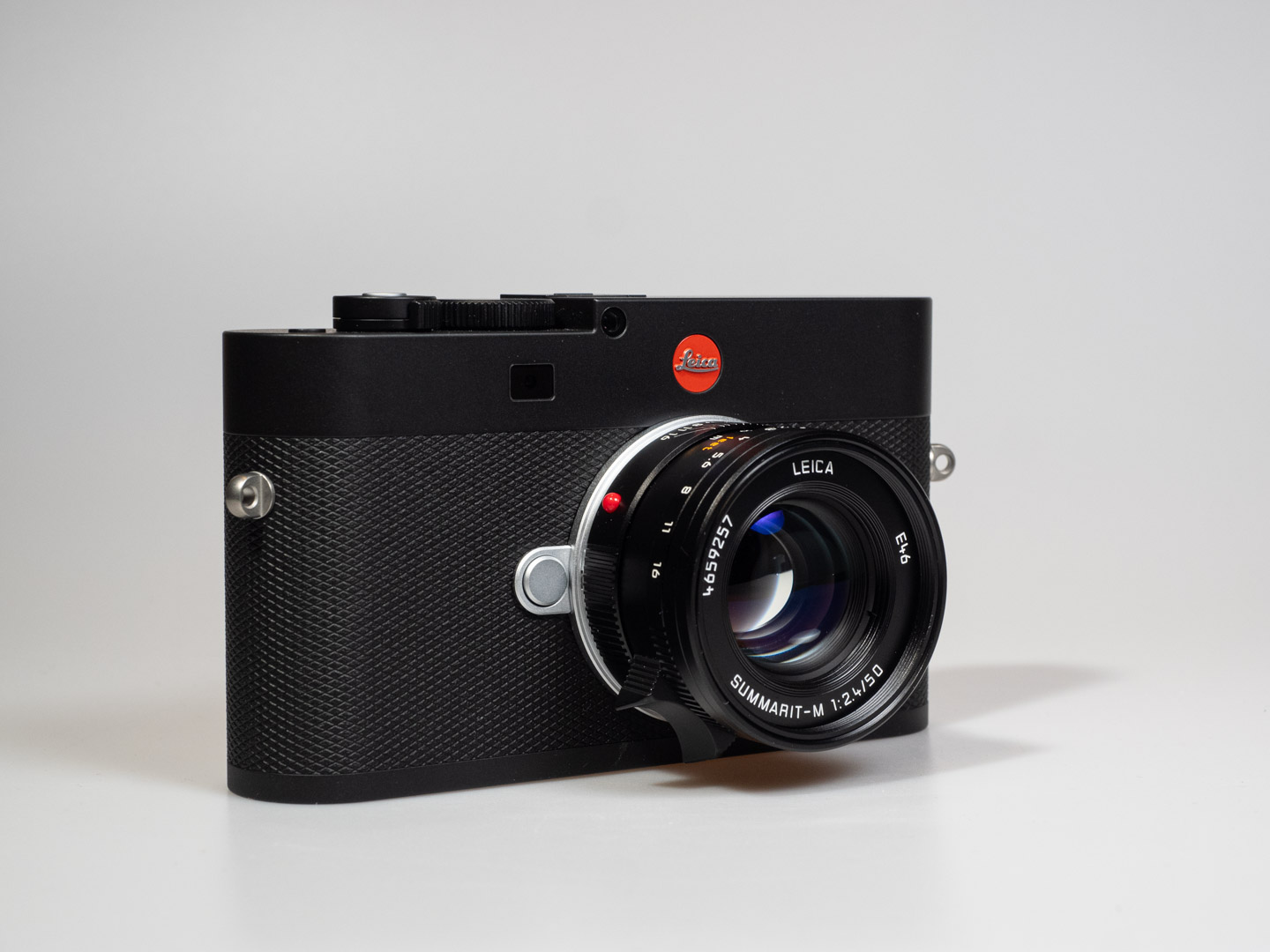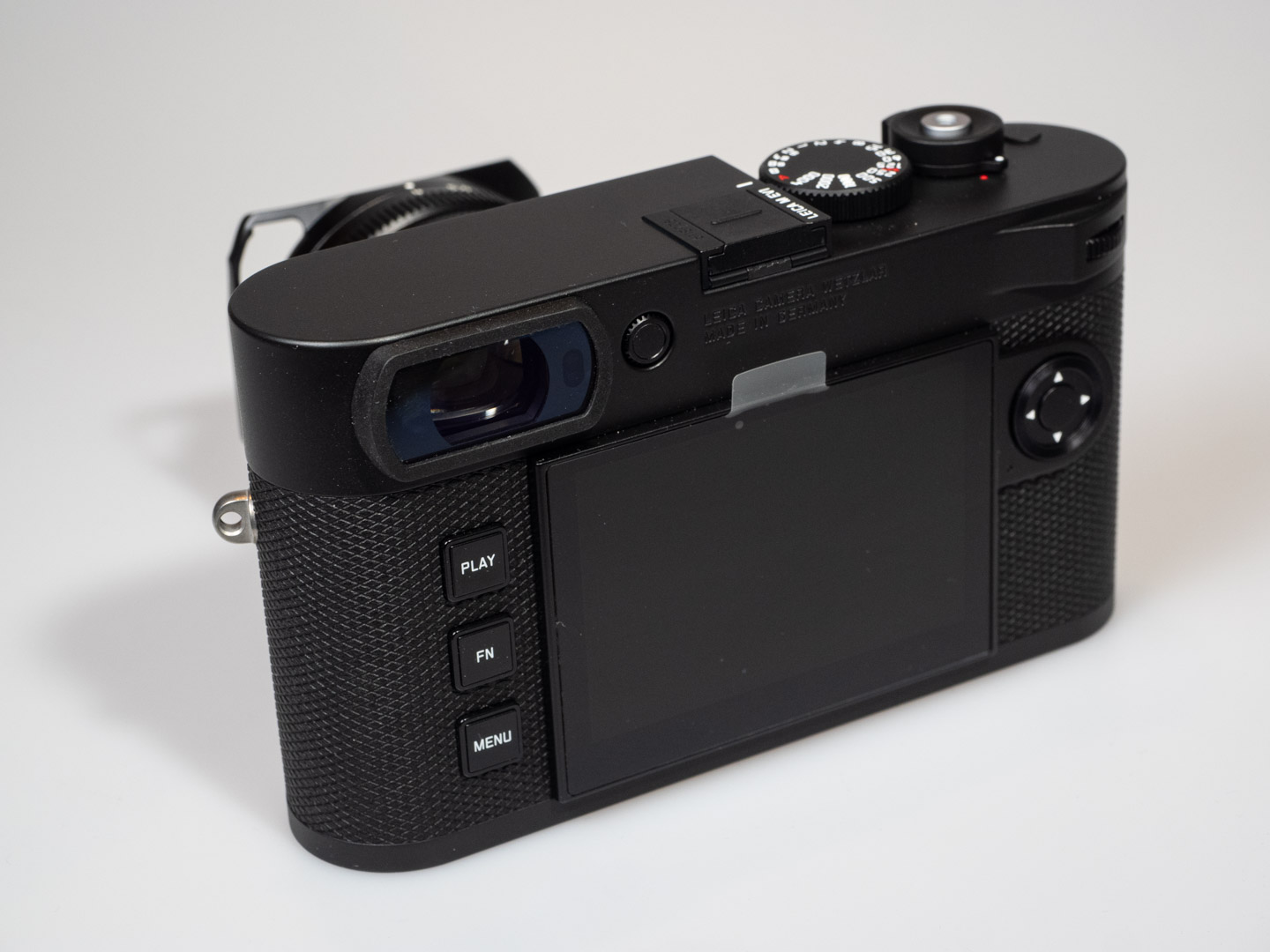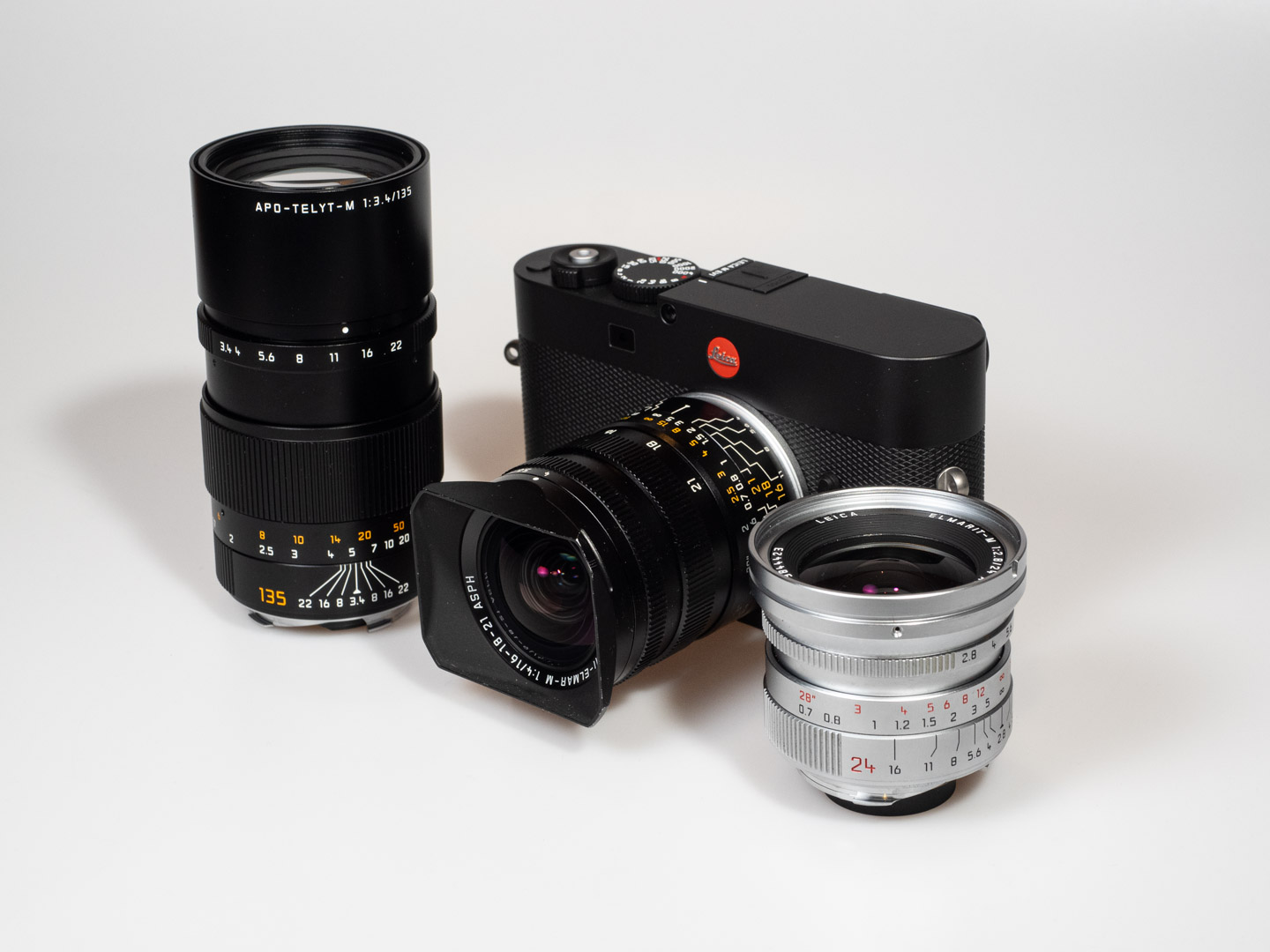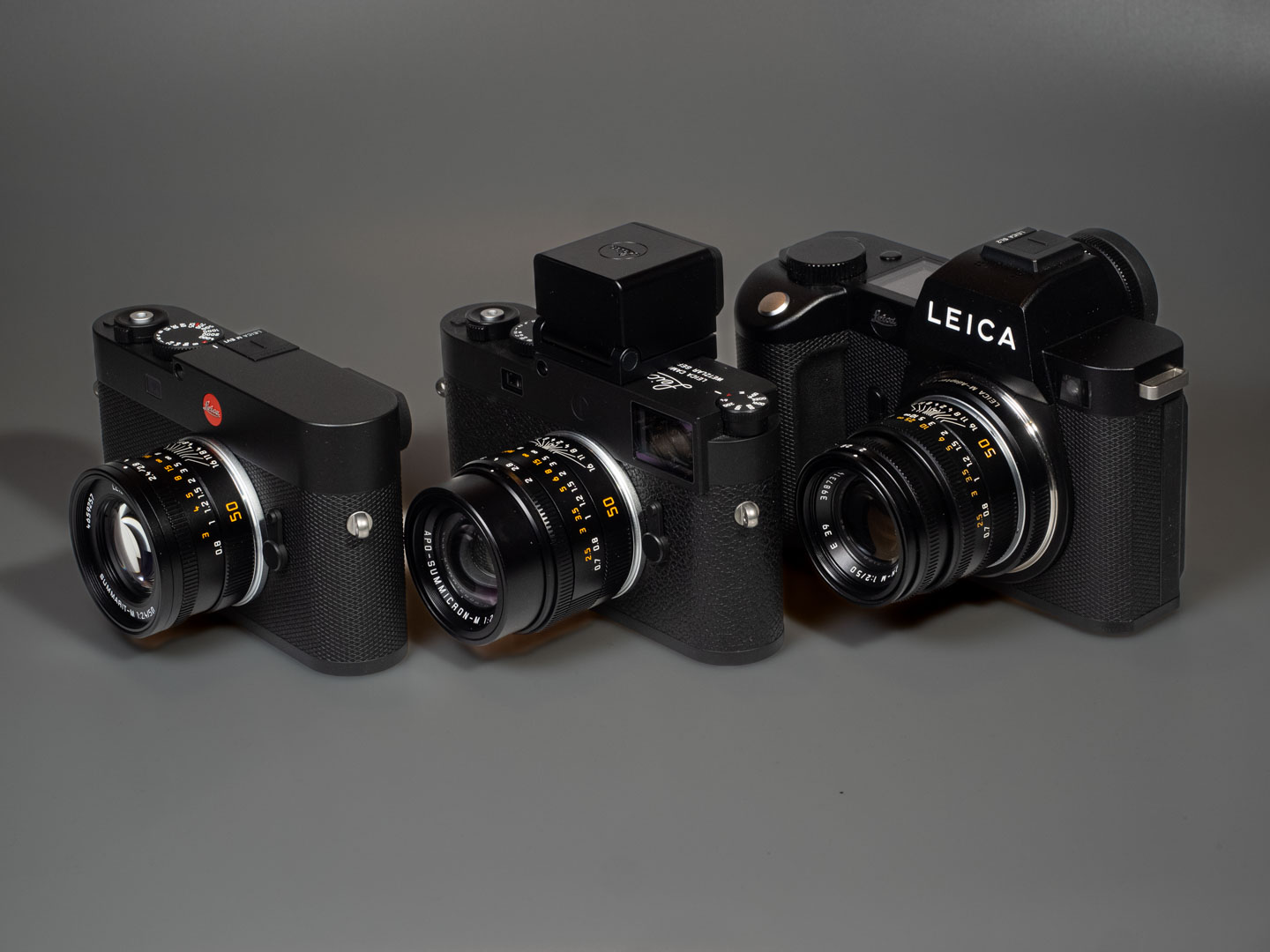A Leica M without a rangefinder? Purists shudder. Isn’t that an attack on… “das Wesentliche” that Leica otherwise advocates so strongly? Is the M EV1, lacking the rangefinder, an M at all? M stands for Messsucher (rangefinder) after all. Or does this camera fill an important gap, and could it become crucial for the future of this traditional brand? Either way, it has recently arrived in Leica stores, so it’s time for a Leica M EV1 hands-on.
The fact that the M EV1 exists at all is a story in itself. Mike Evans from Macfilos, who attended the Leica Society International (LSI, formerly Leica Historical Society of America, LHSA) meeting in Dublin in 2022, reports on it in this detailed article. In short: participants (and this society brings together some very important customers) once again asked Stefan Daniel from Leica about an M with an electronic viewfinder.
The topic was not entirely new at the time, but the answer was new, and Stefan Daniel essentially said: If customers want it, we will build such a camera. In confirmation of his statement, the camera was launched in October 2025. It was announced, appropriately, in the context of the LSI annual conference in Montreal.
M EV1 hands-on: Thanks to Leica Store Konstanz
And so, the Leica M EV1 came into the world. Unusually for new Leica products, the camera was actually available from its market introduction.
No frustration with these waiting lists on which interested customers can sign up at multiple outlets, thus creating a completely exaggerated picture of the supposed demand. But also no mad rush and the associated feeling of looking forward to something extremely rare.
The camera is available, and I was able to borrow the demo camera from Leica Store Konstanz for the Leica M EV1 hands-on. This is a disclaimer, but above all a thank you to the dedicated team there.
My Leica M EV1 hands-on cannot offer an answer to the conundrum of whether this camera is “an M” or not. It matches exactly the M11 body in size, and thus follows the tradition and form factor established in 1954 with the M3.
It has the M bayonet mount, one of the most enduring standards in photography. This makes it possible to easily attach 70-year-old M lenses as if they were from 2025 and not the 1950s. But it does not have a rangefinder, only the electronic viewfinder. Everyone must decide for themselves whether the M designation is quite appropriate or rather presumptuous in this case.


Not instead of, but in addition to the rangefinder
Before you start using the new camera and get hands-on with the M EV1, it might be a good idea briefly to consider what this camera was actually built for and think about specific use cases. Because no one, absolutely no one at Leica, has ever claimed that the electronic viewfinder is intended to replace the rangefinder.
So, given that rangefinder photography is already a niche market, let’s take a look at the niche within the niche (or the niche on the fringe of the niche).


Use case 1: Not-so-good eyesight
The Leica M EV1 has the electronic viewfinder of the Q3 (more about this camera here, and here is Andrew Tobin’s excellent review). It has a beautifully fine resolution and built-in dioptric correction. Anyone who needs glasses, whether due to age or other reasons, will appreciate this. The viewfinder image is nice and bright and, as is typical of Leica, uncluttered. Focus peaking and a viewfinder magnifier are available as aids for manual focusing.
Speaking of it: What Leica did with the frame line selector is outstanding. Obviously, it is not needed in a camera with EVF. But they left this almost iconic part of the M desgin in its place, assigning new functions to if. For example, you can set it to turn on and off the focusing magnifier (if the auto function annoys you) or to activate focus peaking. I found that very smart and to good way to work with the M legagcy.
This is useful, but not nearly as good as the MF assistants on current Canon or Nikon cameras. However, their lenses are based on “fly-by-wire” focusing and require an electronic connection between the lens and the camera. Neither of these is possible with the M-Mount standard. Nevertheless, these focusing features of the new camera will certainly be viable options for some users who want the M feeling but are not or no longer comfortable with the rangefinder.
Use case 2: High-speed lenses
Even a Summilux 50 has a very narrow focus range at close range and at full aperture. With the Noctilux, this shrinks to millimetres (you can calculate it here), so either the eyelashes or the iris are in focus, and 60 megapixels are unforgiving.
Here, too, a high-resolution electronic viewfinder with magnifier and focus peaking can help. However, peaking always marks the area of greatest contrast, which can also be in the background of the image, for example in backlighting; just think of the notorious dark branches against a bright sky.
These limitations became clear several times during my hands-on experience with the M EV1. But, to be fair, it is equally true of focus peaking in all other system cameras with electronic viewfinders. Nevertheless, some photographers will achieve a higher success rate with critical shots this way.
Incidentally, this also applies to other lenses, especially those with a pronounced drop in sharpness, such as the APO-Summicrons.
Use case 3: Long focal lengths
My expectations for the M EV1 hands-on were particularly high in this regard. With the almost forgotten, much underestimated Apo-Telyt 3.4/135, I was never particularly successful with the 0.72 standard rangefinder at open aperture and close range. A focus magnifier seems extremely useful here.
In principle, it is, but due to the even stronger telephoto effect, which can quickly reach a 300mm or even 500mm equivalent, depending on the magnification factor, you need either a very steady hand or a reasonably static subject.
It doesn’t work so well for animals or people in motion. And there is no stabilisation. M lenses don’t offer this, of course, but neither does the M EV1 body, unlike other mirrorless cameras.
Use case 4: Short focal lengths
The rangefinder of all previous M cameras just about covers the 28mm focal length (the 0.85 viewfinder only allows 35mm). For wider angles of view, such as the all-time M classic 21mm, you need to be daring or use an attachable viewfinder.
This is where the electronic version really is beneficial. However, the slower wide-angle lenses have so much depth of field that focusing is not quite so easy. But perhaps extreme precision is not necessary, especially when stopped down to 5.6.
I wasn’t able to try a superfast super-wide-angle lens in my M EV1 hands-on, but a test with the excellent 2.8/24 (unfortunately long discontinued) turned out to be very enlightening. If you want objects outside the centre of the image to be in focus, the electronic viewfinder is fantastic, especially in combination with the freely movable focus magnifier.
This actually seems to me to be the best (and not so rare) use case for this particular camera. So if you own a Summilux 21 or 24, or even the Voigtländer Nokton 1.4/21 (reviewed here in the M-Files), the M EV1 is a magnificent choice!
Some initial thoughts on the Leica M EV1
To be honest, I have great respect for Leica in actually bringing this camera to market. The company has listened to customer requests and can, at the same time, test the market.
The folks in Wetzlar certainly knew that the M EV1 would not convince everyone. And they also knew that there was still room for improvement in terms of technology. Nevertheless, they decided to release this particular product at this particular time.
Personally, I enjoyed the Leica M EV1 hands-on more than I initially expected. I’ve always liked rangefinders, have (almost) always been able to get sharp images with them, and rely in other use cases on autofocus systems, which now work incredibly well. And yet, this new “M” has exerted a certain appeal, and that appeal has not diminished after my hands-on.



I find the best use for this camera is to work with fast wide-angle lenses. This is where the electronic viewfinder comes into its own, as it shows exactly what will be in the photo afterwards. And thanks to the magnifying function, even with, say, a 21mm Summilux (or a Voigtländer, TTArtisan…), the focus can be set very precisely and off-centre. This use case is also where the lack of stabilisation is least noticeable.
What are the alternatives?
So, for what I consider to be a limited usage scenario, the question remains if an M EV1 is really necessary. One alternative is the current M11 (with or without the -P; new or used; and, if desired and for some extra cash, without a display), with the Visoflex 2 for the M11 attached.
However, the Visoflex has a lower resolution and detracts from the M’s elegant appearance. On the other hand, it can be folded up, which is not impractical at all. And for focal lengths from 28 to 75 or 90 millimeters, the classic rangefinder with all its virtues is available. This could be the best of both worlds, if only the Visoflex offered a little more performance.
The other option is a mirrorless system camera with an M adapter. However, especially with M wide-angle lenses, the Nikons, Canons and Sonys are not always convincing. The Leica SL, on the other hand, even reads an M lens’s 6-bit code with the original adapter.
The current SL3 model (here on Macfilos is a long-term test by Jono Slack) has an excellent, large viewfinder and features sensor stabilisation (IBIS), a flip-up display and a very ergonomic grip. It costs significantly less than the M EV1. And it allows for autofocus and all the other support functions, thanks to a massive range of L-mount lenses at all price points. But yes, the SL is larger, heavier – and doesn’t look like an M.
Conclusion in a tiny nutshell
What remains of my Leica M EV1 hands-on in one sentence? It’s very cool that this camera exists, and I wish Leica every success with it — even if it hasn’t yet completely convinced me personally.
More reading that goes far beyond my Leica M EV1 hands-on experience can be found here:
In this Macfilos article, Stefan Daniel answers questions from experts Bill Rosauer and Amitava Chatterjee about the new camera.
If you can read German: Claus Sassenberg has compiled the first reviews in an admirably detailed effort.
| More on M EV1 | |
| Jono Slack’s review of the M EV1 | Other M-Mount cameras without rangefinder |
| Jon Cheffings joined the camera presentation | Petapixel on the M EV1 |
Make a donation to help with our running costs
Did you know that Macfilos is run by five photography enthusiasts based in the UK, USA and Europe? We cover all the substantial costs of running the site, and we do not carry advertising because it spoils readers’ enjoyment. Just a small one-off or regular donation will be appreciated, and we will write to acknowledge all donations.












I was looking through online photo reviews; noticed one titled “Leica CL is the mini M EV1”
Tongue in cheek I suppose — pity about CL availability, though 🙂
I share your thoughts on the EV1. It isn’t for me, but I am pleased Leica is moving forward in this area. It could be transformed with a firmware-implemented innovative focus method that is “very Leica”. This could make the camera a lot more attractive for Leica-philes.
As it is, it would have made more sense to put an M mount on a Q body. Seeing as the EV1 is essentially a Q without a lens in a different housing, I think it should be a lot cheaper than it is.
Like you Joerg-Peter, I look forward to seeing where Leica goes with this.
You’re welcome, Andrew! Great to hear from you. I agree with all you are writing. A Q body with M mount would have been much to my liking as well. However, the Q has the shutter right inside the lens, so removing the lens would leave a non-functional body. But who knows what comes next? New entry points to the M system should definitely be welcomed. All the best, Jörg-Peter
There are two more cameras with FF Sensor, but also with interchangeable lenses and that is SIGMA FP and FPL to me the for this categories of cameras that have similar features, bu for much less money.
Hi Tomislav, thanks for reminding of the Sigma fp and fpL. However, I wouldn’t say they have similar features. They are lacking a built-in electronic viewfinder (there is one you can attach however), they have no mechanical shutter and are prone to rolling shutter issues, flash photography is very limited, and they don’t directly adapt Leica M lenses, including correction profiles via 6bit code. All this does not mean that the Sigmas are bad cameras, and you are right that they are/were attractively priced. But they just don’t compare to the M EV1. JP
Under “Use Case 2”, you mentioned about pronounced drop in sharpness in APO Summicrons. So am I to understand the normal Summicrons measure sharper?
I had the impression that Leica makes sharp APO lenses beside their APO corrections.
Thanks for asking, Eugene. In my experience, all newer Leica lenses are sharp from wide open and mostly also right into the corners. What I am referring to is a design characteristic of Leica’s newer APO lenses. They have, intentionally, a marked contrast (and thus, visually, sharpness) dropoff between the focal plane and the areas in front and behind of it. That give a, say, 50mm APO Summicron (f/2) comparable or even superior “3D effect” than a 50mm Summilux (f/1.4) can produce. The image with the multiple reflections in different focal planes shows this quite well in my opinion. I hope I was able to clarify what I mean – if not, do ask in a reply. Jörg-Peter
There is a further use case for the EV1…. In a studio with flash or strobe trigger mounted on a M camera there is no ability then use the visoflex which for all the above reasons (eyesight, DOF, longer lenses, etc) is very much needed.
Good point, Greg, thanks for adding. Here, it is important to know that the M EV1 does have a mechanical shutter. It has, other than cameras with purely electronic shutters such as the Sigma fp or the Panasonic S9, a real hot shoe (and no issues with rolling shutter as long as you stay in the range of the mechanical shutter (up to 1/4000s). JP
Great article and thanks for posting. Also, thanks for the shoutout and link to our interview with Stefan Daniel. Bill Rosauer and I were honored to introduce the camera at the LSI Montréal conference and the review body was passed around the room for everyone to test. Fun times.
For all those who say “not for me”, “I don’t get it”, etc., it is important to remember that the Leica M EV1 is a choice for one’s consideration. An option to address unique circumstances… maybe help people with poor eyesight. An analog might be a high performance car with fingertip throttle for people who like to drive but have knee trouble that interferes with the motions required to control an accelerator. Does that mean it is any less?
Leica has listened to a subset of its patrons and given them a worthy solution.
I applaud them for it.
Dear Amitava Chatterjee, thank you so much for your feedback. I agree, this is certainly not a camera for everyone (which is no Leica M). And I also applaud Leica for listening to their customers. The question is whether or not the M EV1 is a, as you call it, “worthy solution”. For me personally, a new approach with an innovative focusing aid would a ticked an important box. Focus peaking alone seems a bit on the short side for me, especially for a €7,950 camera. All the best and thanks again, Jörg-Peter
je possède le Leica CL et l’objectif Leica 90 f/2 avec son adaptateur d’origine.
Il fonctionne très bien, autant qu’avec le SL.
Cher Christian, I reply in English for the sake of most of our readers here. Good to hear that you enjoy the 90mm Summicron. As it has very shallow depth of field, it is a very good candidate for use with electronic viewfinders. And with the CL, it makes for a fast 135mm lens, which is a wonderful and much underrated focal length. Enjoy your gear!
I had a week to test a prototype, before release. I agree with all your observations, Joerg-Peter. And I will add one: if you enjoy making images at twilight, and you want to get that right dramatic balance between the subject and the encroaching darkness, it is easy to do with this camera.
Also, much longer lenses than the 135 can be used handheld fairly well. I managed to get very sharp images with a 180/3.4 Apo-Telyt and Apo doubler without much difficulty.
I could do almost as well with my Sony plus a Leica lens, but that combo didn’t “feel” like a Leica.
Many on line have moaned that Leica could have done better here, but we got exactly what was asked for. Personally I have no need for this camera, but for those who asked for this, I hope they appreciate both the gesture and the product itself.
Ed
Dear Ed, and I agree with your conclusion. Leica has provided what (some) customers had asked for. That’s fine, and they took the risk of getting unfair “reviews”. Let’s see if they follow the track as there still is room for further improvement – or if the M EV1 is a dead end. JP
Two thoughts – a shame Leica couldn’t do something similar to the Fuji manual focus system that has a digital split image (which can also zoom!) which mirrors exactly the Leica optical viewfinder. And how about some frame lines so we can see outside the actual frame – something that is so often mentioned as an advantage of rangefinder photography.
Seeing outside the framelines would require a hybrid vf, something that Leica said would too complex to fit in the volume of the M (certainly not with an opto-mechanical rf which the Fuji lacks).
And for what the digital split image concerns, it requires phase detection on the sensor. I don’t know if that is available on the sensor Leica uses, or would be compatible with Leica’s special microlenses array, but it sure looks as a missed opportunity.
Dear Edward and fiatlux, this is an interesting point.
I think there are multiple reasons why Leica decied to go just for focus peaking (which is neither the most innovative nor the most reliable solution for MF support in electronic viewfinder). In fact, I also head what fiatlux is writing. A true hybrid finder (that is: real opto-mechanical rangefinder plus electronic viewfinder, including some innovative focus aids) is obviously difficult to design and produce. Or it would be so expensive that the camera’s price tag would be too hefty. Maybe the M EV1 is a test balloon for Leica to further investigate what the market wants and is ready to pay for.
Edward, an EVF with the possibility to see also what is (more or less) “just outside the frame” would be great, but it is technically impossible: The EVF can only show what the lens “sees”, the true rangefinder, in the contrary, is a standalone optical system with a defined field of view. In most Leica M cameras, it covers “a bit more than the 28mm angle”.
As for the much praised hybrid finder of Fujifilm’s X100 series: This is no classic rangefinder, and the simulation of split image and microprism is not much more than a gimmick in my experience. But as always, your mileage my vary…
All the best and thanks for sharing your thoughts, JP
Nice synopsis, the other benefit of the M EV1 should be the lack of viewfinder blockage using the larger M lenses? This bothered me quite a bit with the tri-elmar on the M10. The price differential between the SL3 and a Q343 is also significant.
Hi Rick, good point. Particularly, the very fast lenses (wide-angle Summiluxes, Noctilux) can show considerable amount of viewfinder blockage. You inspired me to find some more use cases for a potential follow-up to my first Hands-on. Thanks.
HI JP, an interesting read and your conclusion is my conclusion as well. For me to buy into this camera it would need to come in at a lower price point, with IBIS, and with some true innovation in the manual focus assists. That being said, I believe this camera will do just fine as is and in my opinion it has huge potential over time provided Leica becomes committed and actively invests in its growth.
Thank you, SlowDriver, for your feedback. The question is if it “growth” Leica has invested in by developing the M EV1. At any rate, it is good to see some innovation. The fascinating thing is that the M line is still a tool for active photographers. This would come to an end if M cameras and lenses were reduced to museum status.